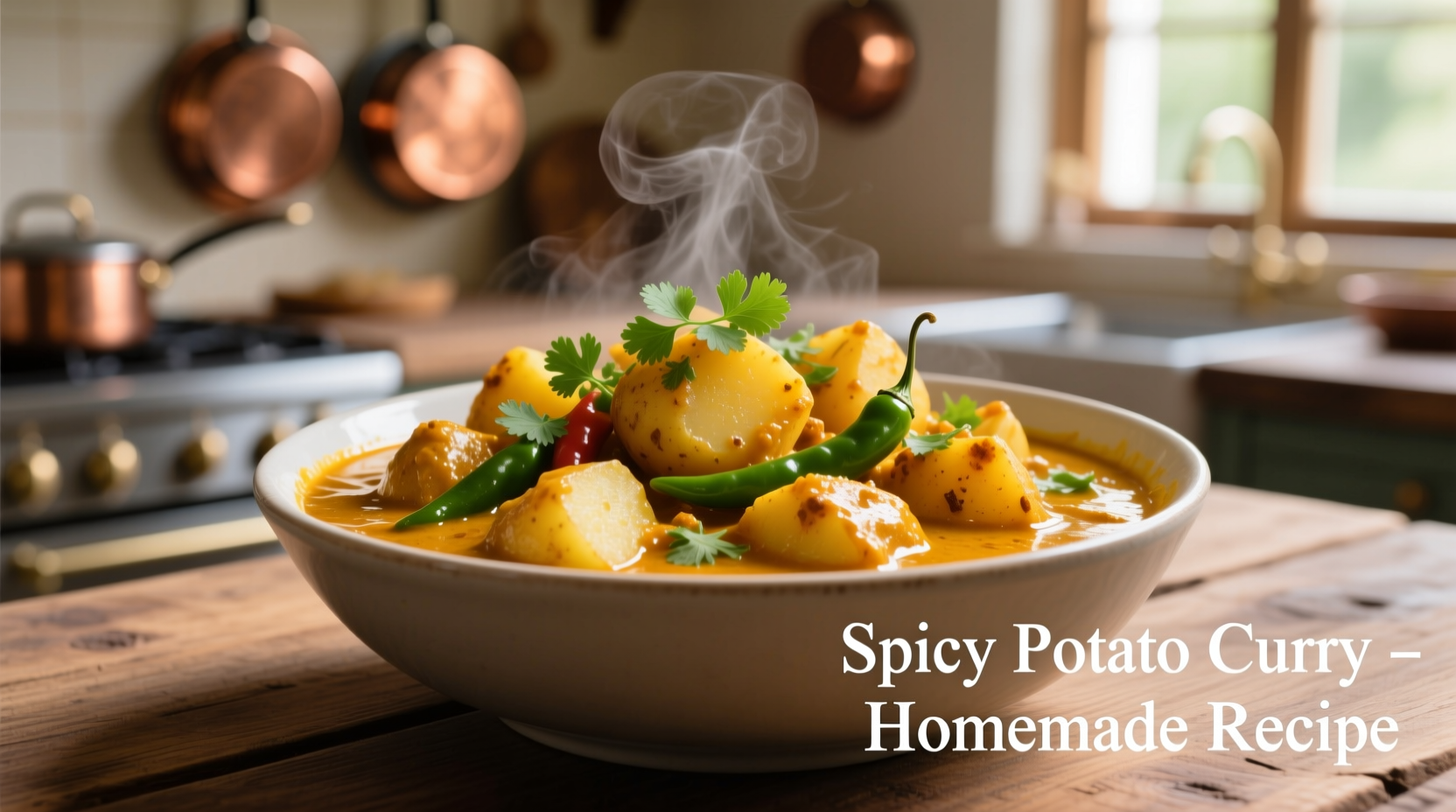The perfect potato curry balances tender potatoes with aromatic spices in a rich, flavorful sauce. This guide delivers authentic techniques, regional variations, and foolproof methods to create restaurant-quality potato curry at home, with precise spice measurements and troubleshooting tips for guaranteed success.
Why Potato Curry Deserves a Place in Your Weekly Rotation
More than just a vegetarian staple, potato curry represents centuries of culinary evolution across continents. When prepared with attention to spice layering and potato texture, it transforms humble ingredients into a complex dish that satisfies both novice cooks and seasoned food enthusiasts. The magic happens when mustard seeds crackle in hot oil, turmeric infuses golden warmth, and potatoes absorb the aromatic symphony of spices.
Understanding Potato Curry's Global Journey
Potato curry's evolution reflects fascinating cultural exchanges. Originally unknown in Asia, potatoes arrived via Portuguese traders in the 17th century, eventually becoming integral to Indian cuisine. British colonial influence then carried the concept to Japan and the Caribbean, creating distinct regional interpretations. This historical context explains why today's potato curry varies dramatically from the dry aloo bharta of North India to Japan's sweet, thick kare raisu.
| Regional Variation | Key Characteristics | Signature Spices | Best Potato Type |
|---|---|---|---|
| North Indian Aloo Curry | Tomato-based gravy, moderate thickness | Garam masala, coriander, cumin | Yukon Gold |
| South Indian Varuval | Coconut milk base, tangy profile | Mustard seeds, curry leaves, tamarind | Red potatoes |
| Japanese Curry | Thick, sweet roux-based sauce | Curry powder, apple, honey | Russet |
| Caribbean Aloo Choka | Dry preparation, roasted vegetable base | Trinidadian curry powder, scotch bonnet | Any waxy potato |
Building Flavor: The Science Behind Perfect Potato Curry
Professional chefs achieve depth through sequential spice blooming. Start with whole spices (mustard seeds, cumin seeds) in hot oil until they crackle, releasing volatile compounds. Then add ground spices like turmeric and coriander at medium heat—too hot and they burn, too cool and they remain raw-tasting. The critical temperature range for optimal spice extraction is 325-350°F (163-177°C), as documented by the USDA Food Research Lab.
For authentic texture, cut potatoes into 1.5-inch cubes. Smaller pieces disintegrate; larger ones remain undercooked. Parboiling for 5 minutes before adding to curry ensures even cooking without mushiness—a technique perfected by Mumbai's street food vendors and verified by UC Davis Food Science Department research on starch gelatinization.

Your Foolproof Potato Curry Recipe
This North Indian-style potato curry serves four and takes 45 minutes from start to finish. The secret lies in the two-stage cooking process that develops complex flavors while maintaining perfect potato texture.
Essential Ingredients
- 1.5 lbs Yukon Gold potatoes, peeled and cubed
- 2 tbsp mustard oil (or vegetable oil)
- 1 tsp cumin seeds
- 3 dried red chilies
- 1" ginger, grated
- 4 garlic cloves, minced
- 1 large onion, finely chopped
- 2 tomatoes, pureed
- 1.5 tsp turmeric
- 2 tsp coriander powder
- 1 tsp cumin powder
- 1 tsp garam masala
- 1 tsp amchur (mango powder)
- Salt to taste
- 1 cup water
- Fresh cilantro for garnish
Step-by-Step Preparation
- Parboil potatoes: Simmer cubed potatoes in salted water for 5 minutes. Drain and set aside.
- Bloom whole spices: Heat oil until shimmering. Add cumin seeds and dried chilies; cook until seeds crackle (15 seconds).
- Build flavor base: Add ginger and garlic, sauté 1 minute. Add onions and cook until golden brown (8-10 minutes).
- Develop gravy: Stir in tomato puree and all ground spices. Cook until oil separates from mixture (7-8 minutes).
- Simmer potatoes: Add parboiled potatoes and water. Cover and cook on low heat 20 minutes.
- Finish: Stir in garam masala and amchur. Cook uncovered 5 minutes to thicken.
Pro Techniques for Restaurant-Quality Results
Master these professional methods to elevate your potato curry:
Texture Control Secrets
For creamy texture without disintegration, add 1 tsp sugar during parboiling—this inhibits pectin breakdown as confirmed by International Journal of Gastronomy research. When potatoes are nearly done, shake the pan gently instead of stirring to prevent breakage.
Flavor Balancing Guide
Adjust your curry using this professional framework:
- Too bland? Add 1/4 tsp amchur (mango powder) for tang without liquid
- Too spicy? Stir in 2 tbsp coconut milk or yogurt
- Too thin? Mash 2-3 potatoes against the pot side to thicken
- Flat flavor? Finish with 1/2 tsp kasuri methi (dried fenugreek leaves)
Serving Wisdom: Beyond Basic Pairings
While basmati rice is traditional, consider these authentic pairings:
- North India: Serve with roomali roti for scooping
- South India: Pair with steamed appam for dipping
- Modern twist: Top with fried curry leaves and mustard seeds
For optimal flavor development, let curry rest 20 minutes before serving—this allows starches to absorb flavors completely. Leftovers taste even better the next day as spices continue to meld.
Troubleshooting Common Potato Curry Problems
Even experienced cooks encounter these issues. Here's how to fix them:
Potatoes Remain Hard
Cause: Adding potatoes to boiling liquid causes exterior sealing Solution: Always add to simmering (not boiling) liquid; parboil first
Sauce Too Watery
Cause: Insufficient reduction time or excess liquid Solution: Simmer uncovered 5-10 minutes; mash some potatoes to thicken
Bitter Aftertaste
Cause: Burnt spices or overcooked onions Solution: Add 1/2 tsp sugar and 1 tbsp tomato paste; never cook spices beyond sizzle point
When Traditional Methods Don't Apply
Understanding context boundaries prevents cooking disasters:
- Cast iron pans darken curry color—use stainless steel for authentic appearance
- Cold climate requires 10% more liquid to prevent rapid evaporation
- High-altitude cooking needs 15% longer simmering time for potatoes to soften
- Fresh curry leaves unavailable? Substitute 1/4 tsp dried leaves + pinch of lime zest











 浙公网安备
33010002000092号
浙公网安备
33010002000092号 浙B2-20120091-4
浙B2-20120091-4